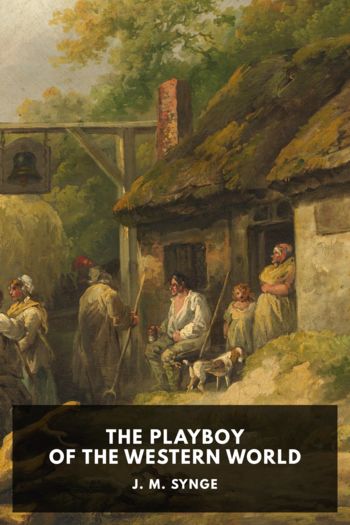Coconut Chaos Diana Souhami (classic books to read txt) 📖

- Author: Diana Souhami
Book online «Coconut Chaos Diana Souhami (classic books to read txt) 📖». Author Diana Souhami
Another quad bike, top-heavy with Lady Myre’s luggage, drew up driven by Ed the Scottish policeman. His accent was broad and I wondered if the Pitcairners managed to understand him. As he unloaded her cases and boxes he said he was leaving next time the Braveheart, the government chartered transport ship, called. He’d done three months’ community policing on the island and he too wanted to go home.
Lady Myre arrived on Rosie’s bike. She was clutching her round the waist and had wrapped her feet in bin bags. She looked bedraggled and her pizzazz had deserted her.
‘What’s my luggage doing here?’ she said. ‘I told them to take it straight to my hotel.’
‘What hotel’s that?’ Rosie asked.
‘The Beachcomber, Waikawa,’ Lady Myre said.
‘I don’t know what this is about,’ said Rosie. ‘There’s no hotel on Pitcairn.’
‘My agent booked it from Kensington.’ Lady Myre sounded frosty. ‘With a sea view and my own jacuzzi.’
‘It’s a room in my house or a room in Suzanne’s house,’ Rosie said. ‘Shirley must have told you that in Auckland. Thirty-five dollars a night including breakfast and dinner. Fifty if you want all the tours and a midday picnic.’
‘I don’t know any Shirley,’ Lady Myre said, and I wondered again about her mental state. ‘There’s a misunderstanding. I’ve a reservation at the Beachcomber.’
A black cloud scudded into the blue sky and again there was a sudden and terrific deluge of rain. ‘Come inside,’ Rosie said. ‘It’s here or here. It’s my house or the rain. There ain’t no hotel or jacuzzi on Pitcairn.’
27
A mile offshore from Pitcairn Fletcher Christian ordered that the Bounty be emptied and stripped. Everything of conceivable use was unloaded to the boats, then to a raft made from the ship’s hatches and hauled by ropes. Animals, wood, plants, books, gold ducats, hammocks, rum, wine – all were dragged to the stony beach where no boat could moor. The contents of the ship and the produce of the island were all these colonisers would have. Armaments, the cannon, knives, axes, tools, masts, the forge, sails, yardages, tinder boxes, compasses, fishing gear – all were carried up the Hill of Difficulty to the Edge, a flat bit of land overlooking what they called Bounty Bay.
The mood of the community was of factional resentment and deep distrust. Even while Christian was reconnoitring the island John Mills had tried to persuade the others to sail off to Tahiti and leave him stranded without supplies. Christian wanted to keep the ship’s bare hull. The others suspected he’d refurbish it, move on and maroon the rest of them, so on 23 January 1790, less than a week after their arrival, Matthew Quintal torched it. He was vengeful towards Christian, who on Tubuai had accused him of mutiny and drunkenness, threatened him with a pistol and put him in irons. The women wept as they watched the Bounty burn. Into the flames went their chance of returning home.
Christian warned all those with him that death would be the penalty for trying to escape. They were to be invisible to passing ships. At first they all camped in tents made from sail-cloth. Goats, pigs and hens were let loose to multiply. Melons, plantains, sweet potatoes, arrowroot, bananas and yams were planted. William Brown, who’d trained at the Royal Botanical Gardens at Kew, had the practical skills to establish crops. Edward Young kept a journal, subsequently lost, in which he wrote of building houses, fencing in and cultivating gardens, fishing, catching birds and cooking Polynesian fashion on hot stones in the ground.
The mutineers – the ‘whites’ – divided the entire island’s usable land among themselves and claimed all its fishing points. Each took a woman for his own use. The six Polynesian men – the ‘blacks’ – were denied any rights. They were used as slaves like the West Indians who might have been the recipients of the breadfruit cargo. Their food was not as choice, they inhabited inferior quarters, were beaten if they disobeyed and accorded only the three women not wanted by their masters.
Their indigenous expertise was needed though: for building, farming and dyeing cloth, for identifying edible plants and fruits. They knew the disposition of the seasons, the lore of the weather, the habits of birds and fish. They were the architects of the wooden houses, which were double-storeyed, rectangular and thatched with palm branches laced to rafters. One side was removable in hot weather. Downstairs was the living and eating area. A trapdoor and ladder led to the bedroom.
They were afflicted and traduced and they had two options: to build a boat and sail away on a moonlit night when the sea was calm, or to murder their oppressors.
28
There was a room each for Lady Myre and me. I conceded that the larger must be hers. It had a chest of drawers, patterned lino, a bedspread with red lilies on it, an array of teddy bears wrapped in cellophane on a pelmet above a small window. By the time we’d brought in all her luggage there was no room to move.
Rosie went back to the jetty to help sort more stuff. I put my rucksack in my room. There was a bare bulb above a single bed and on the wall a framed print of a bearded saint and magazine cut-outs of three puppies and two cats. I turned down the floral sheet, peered at the mattress and feared its history.





Comments (0)